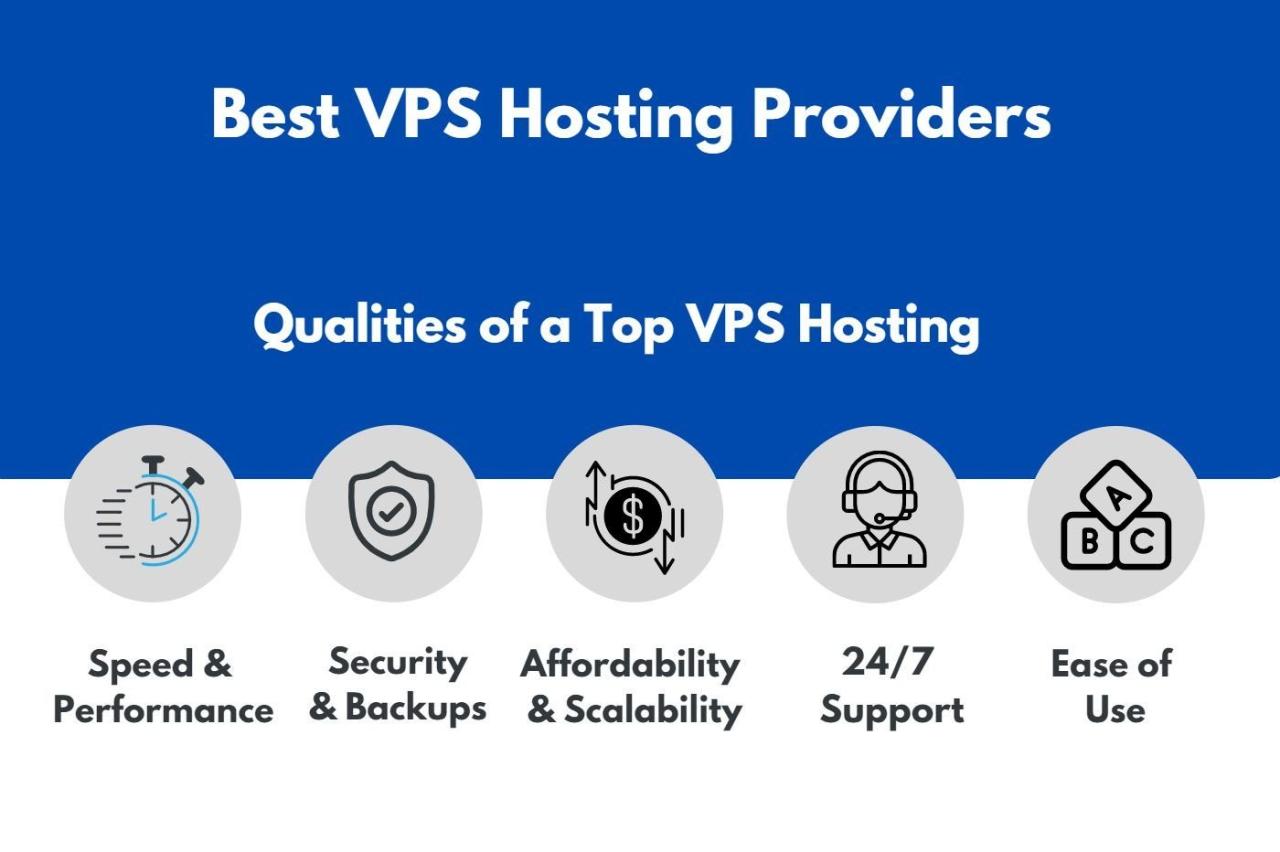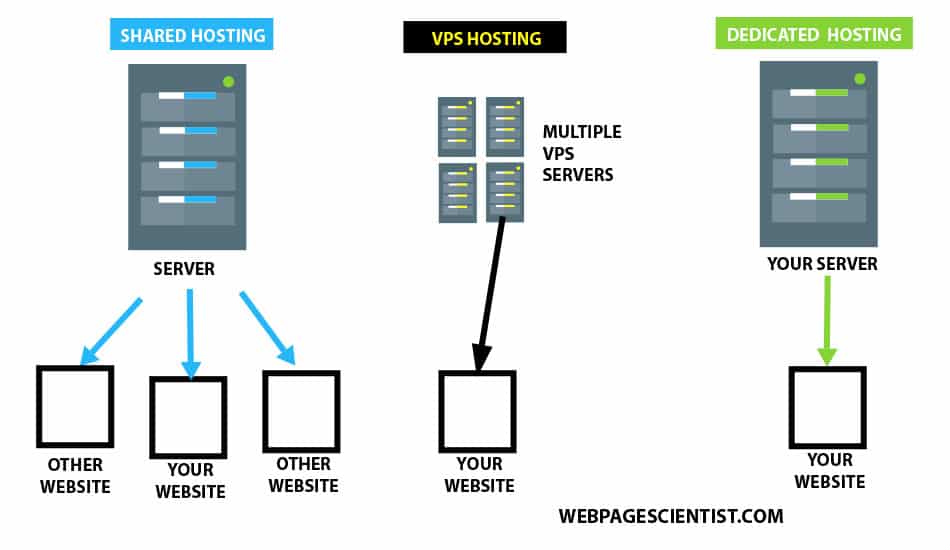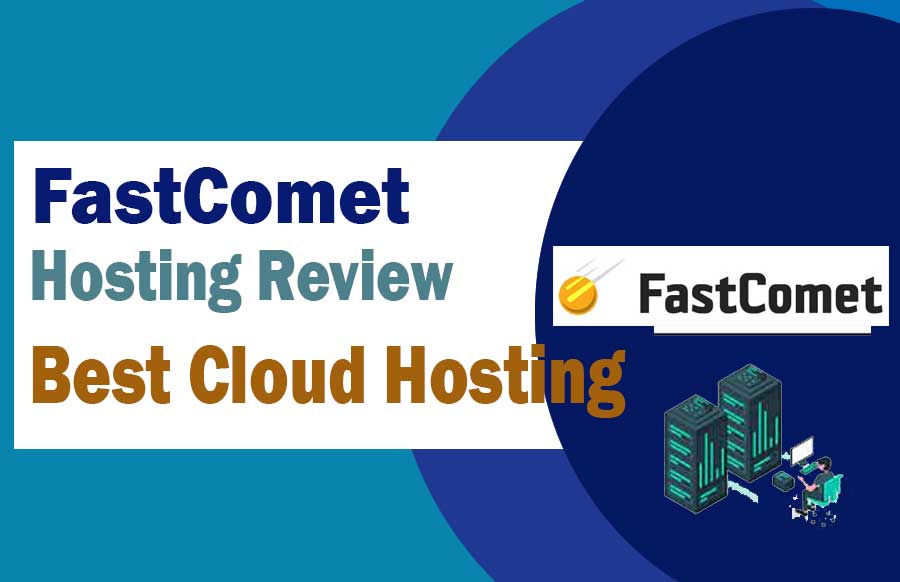Best VPS providers are essential for businesses and individuals seeking powerful, reliable, and scalable hosting solutions. Unlike shared hosting, where resources are shared with other websites, VPS hosting offers dedicated resources, ensuring better performance and control. VPS hosting is ideal for websites with high traffic, demanding applications, and those prioritizing security and customization.
This guide will delve into the key features, performance metrics, pricing models, and security considerations of top VPS providers. We’ll explore how to choose the right provider based on your specific needs and requirements, ensuring you get the most out of your VPS hosting experience.
Introduction to VPS Hosting: Best Vps Providers
VPS hosting, or Virtual Private Server hosting, is a type of web hosting where a physical server is divided into multiple virtual servers, each with its own operating system and resources. This allows users to have more control and flexibility than with shared hosting, where multiple websites share the same server resources.
VPS hosting offers several benefits, including:
Benefits of VPS Hosting
VPS hosting offers a balance between the affordability of shared hosting and the power and flexibility of dedicated servers. It is a good option for websites that require more resources than shared hosting can provide, but do not need the full power of a dedicated server.
- Increased Performance: VPS hosting provides dedicated resources, such as RAM, CPU, and storage, which results in faster loading times and improved performance for your website.
- Enhanced Security: Each VPS is isolated from other users, which helps to protect your website from security threats and vulnerabilities that could affect other websites on the same server.
- Greater Control: VPS hosting gives you root access to your server, allowing you to install and configure software, manage security settings, and customize your environment.
- Scalability: VPS hosting allows you to easily scale your resources as your website grows. If you need more RAM, CPU, or storage, you can upgrade your VPS plan or add additional resources.
Key Differences Between VPS and Shared Hosting
VPS hosting is a step up from shared hosting, offering more resources and control. Shared hosting is a more budget-friendly option, but it can be less reliable and secure.
- Resource Allocation: Shared hosting allows multiple websites to share the same server resources, while VPS hosting provides dedicated resources to each virtual server.
- Control and Flexibility: VPS hosting gives you root access to your server, allowing you to customize your environment and install software, while shared hosting offers limited control.
- Performance: VPS hosting typically offers better performance than shared hosting, as dedicated resources lead to faster loading times and improved website responsiveness.
- Security: VPS hosting is generally more secure than shared hosting, as each VPS is isolated from other users, reducing the risk of security breaches.
- Cost: Shared hosting is typically more affordable than VPS hosting, but it may not be suitable for websites with higher resource requirements.
Use Cases for VPS Hosting
VPS hosting is suitable for various websites and applications that require more resources and control than shared hosting can provide.
- E-commerce Websites: VPS hosting can handle the traffic and transactions of online stores, ensuring a smooth and secure shopping experience for customers.
- High-Traffic Websites: Websites that experience heavy traffic, such as news portals or social media platforms, benefit from the dedicated resources and performance of VPS hosting.
- Resource-Intensive Applications: Applications that require significant processing power, such as video streaming services or online gaming platforms, can leverage the dedicated resources of VPS hosting.
- Development and Testing Environments: Developers and testers can use VPS hosting to create isolated environments for testing and deploying applications without affecting other users.
Performance and Reliability
When choosing a VPS provider, performance and reliability are paramount. You need a provider that can guarantee uptime, handle traffic spikes, and deliver a smooth user experience. This section explores how to evaluate VPS providers based on these crucial factors.
Uptime Guarantees and Performance Metrics
Uptime guarantees and performance metrics are key indicators of a VPS provider’s reliability. Uptime guarantees are usually expressed as a percentage, indicating the expected uptime of the server. For instance, a 99.9% uptime guarantee means the server is expected to be online for 99.9% of the time.
Performance metrics, such as response time, latency, and throughput, are also important considerations. These metrics measure the speed and efficiency of the server in responding to requests.
- Uptime Guarantees: Look for providers that offer high uptime guarantees, typically in the range of 99.9% or higher. Some providers may offer service level agreements (SLAs) that Artikel specific penalties for downtime, providing additional assurance of their commitment to reliability.
- Performance Metrics: Monitor performance metrics like response time, latency, and throughput. These metrics can help you understand the speed and efficiency of the server in handling requests. A low response time, low latency, and high throughput indicate optimal performance.
Server Location and Network Infrastructure
Server location and network infrastructure play a crucial role in VPS performance. The closer your server is to your target audience, the faster the website or application will load. Additionally, a robust network infrastructure with high bandwidth and low latency is essential for optimal performance.
- Server Location: Consider the location of the server in relation to your target audience. If you have a global audience, consider using a provider with multiple data centers worldwide. Choosing a server location closer to your audience can minimize latency and improve website loading times.
- Network Infrastructure: Ensure the VPS provider has a reliable and robust network infrastructure with high bandwidth and low latency. A high-bandwidth network allows for fast data transfer, while low latency minimizes delays in communication. A provider with a well-maintained network infrastructure can significantly improve the overall performance of your VPS.
Load Balancing and Caching
Load balancing and caching are essential for optimizing VPS performance, particularly under high traffic loads. Load balancing distributes traffic across multiple servers, preventing any single server from becoming overloaded. Caching stores frequently accessed data in a temporary location, reducing the need to fetch it from the main server and speeding up website or application loading times.
- Load Balancing: Load balancing helps distribute traffic evenly across multiple servers, preventing any single server from becoming overwhelmed. This ensures consistent performance even during peak traffic hours. It also provides redundancy, as if one server fails, the others can handle the load.
- Caching: Caching stores frequently accessed data in a temporary location, reducing the need to fetch it from the main server. This speeds up website or application loading times, improving user experience. Caching is particularly effective for static content like images and CSS files.
Pricing and Plans

Choosing the right VPS plan is crucial for getting the most out of your investment. Different providers offer a variety of pricing models and plans, each with its own set of features and resources. This section explores the various pricing strategies and plans, emphasizing the importance of transparency and flexibility in pricing policies.
Pricing Models
Different VPS providers employ various pricing models to cater to diverse needs and budgets. Here are some common models:
- Hourly Billing: This model charges users based on the actual time they use the VPS. It is ideal for short-term projects or tasks that require temporary resources.
- Monthly Billing: The most prevalent model, monthly billing offers a fixed price for a specific period. This option provides predictability and stability for long-term projects.
- Pay-as-you-go: This model allows users to pay only for the resources they use. It is flexible and cost-effective for fluctuating workloads, but can be complex to manage.
Plan Features and Resources
VPS plans are categorized based on their features and resources, such as:
- CPU Cores: Determines the processing power of the VPS. More cores translate to faster performance and the ability to handle demanding applications.
- RAM: Refers to the VPS’s memory capacity. Larger RAM allows for smoother operation and the ability to run multiple applications simultaneously.
- Storage: Represents the VPS’s disk space. It is essential for storing data, applications, and operating systems. Different providers offer various storage types, including SSDs and HDDs.
- Bandwidth: Determines the amount of data that can be transferred to and from the VPS. Higher bandwidth is crucial for websites and applications with heavy traffic.
Cost-Effectiveness of Different Plans
The cost-effectiveness of a VPS plan depends on the specific needs of the user. For instance, a plan with high CPU cores and RAM may be ideal for resource-intensive applications, but it may not be cost-effective for a simple website with low traffic. To determine the best plan, consider the following factors:
- Traffic Volume: Estimate the average number of visitors and the amount of data transfer required for your website or application.
- Application Requirements: Determine the resource demands of your applications, such as CPU, RAM, and storage.
- Scalability: Consider the potential for future growth and the need to upgrade your plan.
Transparency and Flexibility in Pricing
Transparency and flexibility are crucial aspects of VPS pricing policies. Providers should clearly Artikel their pricing structure, including any hidden fees or charges. Flexibility allows users to adjust their plans based on changing needs, without incurring significant penalties.
- Clear Pricing Structure: Providers should clearly display the cost of their plans, including features, resources, and any additional fees.
- Flexible Upgrading and Downgrading: Users should be able to easily upgrade or downgrade their plans based on their changing requirements.
- Refund Policies: Providers should offer fair refund policies, especially for new users who are unsure about their needs.
Customer Support and Resources
When choosing a VPS provider, it’s crucial to consider the level of customer support and resources they offer. This aspect can significantly impact your experience, especially when you encounter technical issues or require assistance with configuration.
Support Channels and Responsiveness
Having access to reliable and responsive support channels is essential for a smooth VPS hosting experience. A good VPS provider will offer multiple support options, such as:
- Live Chat: Provides immediate assistance for urgent inquiries.
- Email Support: Ideal for detailed inquiries or issues requiring more time to resolve.
- Phone Support: Offers a direct line for quick and personalized assistance.
- Ticketing System: Allows users to submit detailed requests and track their progress.
The speed of response and the quality of support provided are critical factors to consider. Look for providers that offer 24/7 support and have a proven track record of resolving issues promptly and effectively.
Choosing the Right VPS Provider
Finding the ideal VPS provider for your needs can be overwhelming given the vast options available. To make the process easier, we’ve created a step-by-step guide to help you navigate through the selection process.
Evaluating Your Requirements
Understanding your specific needs and requirements is the foundation for choosing the right VPS provider.
- Define your website or application’s requirements: Consider the traffic volume, storage needs, processing power, and any specific software or technologies you’ll be using.
- Determine your budget: VPS providers offer various pricing plans. Set a realistic budget and consider factors like monthly fees, setup costs, and potential future upgrades.
- Identify your technical expertise: Evaluate your comfort level with managing server administration tasks. If you lack experience, look for providers offering managed VPS services.
Research and Compare Providers
Once you understand your requirements, it’s time to research and compare different VPS providers.
- Explore reputable providers: Look for established companies with a proven track record in VPS hosting. Research online reviews and customer testimonials.
- Compare features and specifications: Analyze each provider’s offerings, including CPU cores, RAM, storage space, bandwidth, and network connectivity.
- Check pricing and plans: Compare the cost of different VPS plans, including any additional fees or hidden charges.
- Evaluate customer support: Look for providers with responsive and helpful customer support channels, such as live chat, phone, and email.
Assess Performance and Reliability, Best vps providers
Performance and reliability are crucial factors for any VPS provider.
- Check server locations and network infrastructure: Choose a provider with servers located in regions that align with your target audience and minimize latency.
- Review uptime guarantees and service level agreements (SLAs): Look for providers offering high uptime guarantees and robust SLAs to ensure consistent service availability.
- Explore security features: Assess the provider’s security measures, including firewalls, intrusion detection systems, and data encryption protocols.
Consider Additional Features and Services
Beyond core features, consider additional services that can enhance your VPS experience.
- Managed VPS services: If you lack server administration expertise, consider managed VPS plans where the provider handles server maintenance and security updates.
- Scalability and flexibility: Choose a provider that offers easy scalability options to accommodate future growth and changes in your website or application’s requirements.
- Backup and recovery options: Ensure the provider offers reliable backup and recovery services to protect your data against potential failures or security breaches.
Make an Informed Decision
After thorough research and comparison, you’ll be well-equipped to make an informed decision.
- Prioritize your needs: Consider the factors most critical to your website or application’s success, such as performance, reliability, security, and affordability.
- Read user reviews and testimonials: Gain insights from real users’ experiences to validate your research and assess the provider’s reputation.
- Contact the provider: Reach out to the provider’s customer support team with any questions or concerns you may have.
Security Considerations
VPS hosting provides a greater degree of control and flexibility compared to shared hosting, but it also comes with increased security responsibilities. It’s crucial to implement robust security measures to protect your VPS server and the data it stores.
Securing Your VPS Server
Securing your VPS server involves implementing a layered approach that addresses potential vulnerabilities and mitigates common threats. This includes taking proactive steps to prevent unauthorized access, protect against malware, and ensure data integrity.
Best Practices for Security
- Regular Security Updates: Keep your operating system, software, and applications up-to-date with the latest security patches. This helps close known vulnerabilities that attackers could exploit.
- Strong Passwords: Use strong and unique passwords for your server’s root account and any other administrative accounts. Avoid using easily guessed passwords or sharing them with others.
- Firewall Configuration: Configure your firewall to block unauthorized access to your server. Only allow access to specific ports and services that are necessary for your applications.
- Regular Backups: Create regular backups of your server’s data and configuration files. This allows you to restore your server to a previous state if it’s compromised or affected by data loss.
- Security Monitoring: Use security monitoring tools to detect suspicious activity on your server. These tools can help identify potential threats and take immediate action to mitigate them.
- Two-Factor Authentication (2FA): Enable 2FA for your server’s administrative accounts. This adds an extra layer of security by requiring a second verification factor, such as a code sent to your phone, in addition to your password.
- Regular Security Audits: Perform regular security audits to identify any potential vulnerabilities or weaknesses in your server’s configuration. These audits can help you stay ahead of emerging threats and ensure your server remains secure.
Protecting Against Malware
- Anti-Malware Software: Install and regularly update anti-malware software on your server. This helps detect and remove malicious software that could compromise your system.
- Regular Scans: Perform regular scans of your server’s files and applications to detect any malware infections. Use a combination of signature-based and behavior-based detection methods for comprehensive protection.
- File Integrity Monitoring: Implement file integrity monitoring to detect any unauthorized changes to your server’s files. This helps identify malware that might have modified critical system files.
- User Account Security: Limit the privileges of user accounts on your server. Only grant necessary permissions to specific users, and avoid using administrative accounts for everyday tasks.
Protecting Against Hacking
- Secure SSH Access: Use SSH (Secure Shell) to access your server remotely. Enable SSH key-based authentication instead of password-based authentication to prevent brute-force attacks.
- Vulnerability Scanning: Perform regular vulnerability scans to identify any security flaws in your server’s configuration. This helps you address potential weaknesses before attackers can exploit them.
- Web Application Security: Implement security measures for your web applications, such as input validation, output encoding, and session management, to prevent cross-site scripting (XSS) attacks and other web-based vulnerabilities.
- Network Segmentation: Segment your network to isolate your server from other devices. This helps limit the impact of a potential security breach on other systems.
Scalability and Growth
As your business grows, so too will your need for computing resources. Choosing a VPS provider that offers scalable solutions is crucial for ensuring your website or application can handle increasing traffic and demand. Scalability refers to the ability to adjust your VPS resources on-demand, without disrupting your services.
VPS providers offer various options for scaling your resources. Some allow you to easily upgrade your plan, adding more CPU, RAM, or storage as needed. Others offer flexible solutions like adding more virtual cores or RAM to your existing VPS. This allows you to scale your resources incrementally, ensuring you only pay for what you use.
Upgrading Resources and Managing Server Growth
The ability to easily upgrade your VPS resources is crucial for managing server growth. A good VPS provider will offer a range of upgrade options, allowing you to seamlessly scale your resources as your needs change.
Some VPS providers offer automated scaling solutions. This means that you can set up rules that automatically adjust your resources based on predefined metrics, such as CPU usage or website traffic. This can be a great way to ensure your server always has the resources it needs to perform optimally, without you having to manually adjust anything.
Choosing the best VPS provider can be a tough decision, with so many options available. It’s a bit like finding the perfect recipe for homemade dish soap – you want something that’s effective, affordable, and easy to use. Once you’ve found the right VPS provider, you’ll be set up for success, just like having a reliable dish soap makes cleaning a breeze.
It’s important to consider the following when choosing a VPS provider:
- Ease of upgrading: How easy is it to upgrade your plan or adjust your resources?
- Upgrade options: What specific resources can you upgrade? (e.g., CPU, RAM, storage, bandwidth)
- Upgrade time: How long does it take to upgrade your resources?
- Cost of upgrades: What are the costs associated with upgrading your resources?
Importance of Flexible and Scalable Solutions
Flexible and scalable VPS solutions are essential for businesses of all sizes. This is because they allow you to:
- Handle traffic spikes: During peak periods, you can quickly scale up your resources to handle the increased demand.
- Optimize resource utilization: You can adjust your resources based on your actual needs, avoiding unnecessary expenses.
- Prepare for future growth: You can easily scale your VPS as your business grows, ensuring you always have the resources you need.
- Avoid downtime: By scaling your resources proactively, you can prevent your website or application from experiencing downtime due to insufficient resources.
Monitoring and Management
Keeping a close eye on your VPS’s health and performance is crucial for ensuring its smooth operation and preventing unexpected downtime. This involves actively monitoring various aspects of your server, including resource utilization, system performance, and security.
VPS Monitoring Tools and Techniques
Monitoring tools and techniques provide valuable insights into your VPS’s performance and resource usage, enabling you to identify potential issues and optimize resource allocation.
- Resource Utilization Monitoring: Tools like
htop,top, andiostatprovide real-time insights into CPU, memory, disk, and network usage. This information helps you understand which resources are being heavily utilized and identify potential bottlenecks. - Performance Metrics Monitoring: Monitoring tools like
sar,vmstat, andnetstatprovide detailed performance metrics, including system load, disk I/O, network throughput, and latency. This information helps you assess the overall health and performance of your VPS. - Log Analysis: Analyzing system logs helps identify error messages, security events, and other anomalies that might indicate problems. Tools like
grep,tail, and log analysis software like Graylog or ELK Stack can be used for this purpose. - Third-Party Monitoring Services: Several third-party monitoring services like Datadog, New Relic, and Prometheus offer comprehensive monitoring solutions for VPSs. These services provide real-time dashboards, alerts, and detailed performance reports, simplifying the monitoring process.
Benefits of Proactive Monitoring
Proactive monitoring offers numerous benefits, including:
- Early Detection of Issues: By constantly monitoring your VPS, you can detect issues early on, before they escalate into major problems that cause downtime.
- Improved Performance: Monitoring helps you identify performance bottlenecks and optimize resource allocation, leading to improved overall performance.
- Enhanced Security: Monitoring system logs and network activity helps detect security threats and breaches, enabling you to take timely action to mitigate risks.
- Reduced Downtime: By identifying and addressing issues proactively, you can minimize downtime and ensure continuous service availability.
Management Panels for Server Administration
Management panels streamline server administration tasks, providing a user-friendly interface for managing your VPS.
- Web-Based Interface: Management panels offer a web-based interface for managing your VPS, eliminating the need for command-line interactions.
- Simplified Administration: Management panels simplify tasks such as installing software, managing users, configuring services, and monitoring performance.
- Centralized Control: Management panels provide a centralized platform for managing multiple VPSs, making it easier to oversee your entire server infrastructure.
- Security Features: Many management panels include built-in security features, such as firewalls, intrusion detection systems, and access control mechanisms.
Best Practices for VPS Management
Effective VPS management is crucial for maximizing performance, security, and overall efficiency. By implementing best practices, you can ensure your server runs smoothly, reliably, and securely.
Optimizing Server Performance
Server performance directly impacts the user experience, making optimization a top priority. Here are some key practices:
- Monitor resource usage: Regularly track CPU, memory, and disk usage to identify bottlenecks and optimize resource allocation. Tools like htop, iostat, and vmstat provide detailed insights into server performance.
- Optimize software configuration: Configure applications and services to utilize resources efficiently. For instance, adjust Apache’s MaxClients directive to prevent resource exhaustion during peak traffic.
- Utilize caching: Implement caching mechanisms like memcached or Redis to reduce database load and speed up data retrieval. Caching frequently accessed data in memory significantly improves performance.
- Regularly update software: Keep your operating system and applications up to date to benefit from performance enhancements and security patches.
Managing Security
Security is paramount for any VPS server, protecting your data and applications from malicious attacks. Here’s how to enhance security:
- Use strong passwords: Implement complex passwords for all user accounts and administrative privileges. Use a password manager to securely store and manage passwords.
- Enable two-factor authentication: Add an extra layer of security by requiring two-factor authentication for sensitive accounts, such as root access. This significantly reduces unauthorized access.
- Regularly update security software: Keep your antivirus, firewall, and intrusion detection systems updated to protect against the latest threats. Regularly scan your server for vulnerabilities.
- Limit access to essential services: Only allow access to services necessary for your applications and restrict access to unnecessary ports and services.
- Implement security hardening: Configure your server to enhance security by disabling unnecessary services, restricting root access, and implementing secure configurations for applications.
Troubleshooting Common Issues
Troubleshooting issues promptly is essential for maintaining server uptime and resolving problems quickly. Here are some effective approaches:
- Use logging tools: Utilize system logs to track events and identify potential issues. Tools like journalctl (for systemd) and logrotate help manage and analyze logs effectively.
- Monitor server metrics: Keep an eye on resource usage, network traffic, and other relevant metrics to identify performance degradation or resource exhaustion. This helps pinpoint the root cause of issues.
- Utilize debugging tools: Leverage debugging tools like strace, gdb, and valgrind to identify and resolve application-specific issues. These tools provide detailed information about program execution and resource usage.
- Consult documentation and online resources: Refer to official documentation and online forums for troubleshooting guidance and solutions to common issues.
- Seek support from your VPS provider: If you encounter complex issues, don’t hesitate to contact your VPS provider’s support team for assistance. They often have expertise and resources to help resolve technical problems.
Regular Maintenance and Updates
Regular maintenance is vital for ensuring optimal performance, security, and stability.
- Schedule regular backups: Create regular backups of your data and configuration files to protect against data loss. Implement a backup strategy that suits your needs, including offsite backups for added security.
- Perform system updates: Keep your operating system and applications up to date to benefit from security patches, bug fixes, and performance improvements. Use automated update mechanisms for efficient management.
- Clean up unused files and packages: Regularly remove unnecessary files and packages to free up disk space and improve performance. Use tools like ‘du’ and ‘df’ to identify large files and unused packages.
- Monitor and optimize resource allocation: Regularly review resource usage and adjust resource allocation as needed to ensure optimal performance and prevent bottlenecks.
Wrap-Up
Choosing the best VPS provider involves careful consideration of factors like performance, security, pricing, and customer support. By understanding the key features and comparing different providers, you can find a solution that meets your specific needs and budget. Whether you’re running a high-traffic website, a demanding application, or simply seeking a more secure and reliable hosting environment, VPS hosting offers a powerful and flexible solution.




